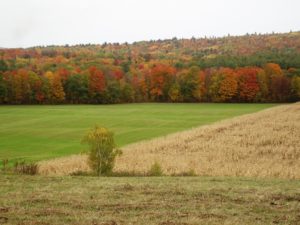
“Pastor, I was here before you arrived, and I will be here long after you leave.” Such sentiments have been expressed in one form or another by church people over the years. The truth is, as pastors, we start in a local church as foreigners or aliens. We are from “away.” Ministry success in other contexts does not guarantee ministry success in the new context. We must learn the culture of the new community. Missiologists call it contextualization, and contextualization matters more than we realize in our preaching.
I recently returned from the annual meeting of the Evangelical Homiletics Society where I rubbed shoulders with and listened to some of the sharpest thinkers from across America. For the most part, these are seminary professors who teach, research and write about preaching. I learned a lot from the keynote speakers to the academic workshops. Scholars presented thirteen academic research papers, and one of those was on the topic of contextualization. Jared Alcantara from Trinity Evangelical Divinity School presented a paper entitled, Sermons with “Local Soil”: Cultivating Contextually Responsive Preachers.
Sermons can only take root and flourish in local soil, to borrow a phrase by Fred Craddock. Contextually responsive preachers are preachers who are rooted in the communities where they preach and able to communicate in the language of the local soil. Alcantara raised the question, how can we become “more contextually responsive preachers, or preach sermons with local soil?” The discussion that followed was healthy and enlightening as we wrestled with the process he outlined. The following are my “take aways” from the discussion.
STRATEGY FOR CULTIVATING LOCAL SOIL SERMONS
Ask to hear their stories. One of the best ways we can learn the local soil is by interviewing the local people. Let them tell us how they think and what is important to them. We need to learn from them, so we can avoid blowing up a church because we insist on our cultural viewpoints. I remember a good friend moving from Pennsylvania to Maine to pastor a rural church many years ago. He took contextualization to heart and would ride in the logging trucks with the men in his community to learn their ways and listen to their stories. He was contextually responsive.
Research the community archives. The discipline of cultural anthropology can provide insights into the process. How can we speak the language of the host culture while being faithful to the biblical message? Every community has documents archived at the town hall explaining the history of the town. If we read with culturally sensitive eyes, we can learn much about the community before we ever open our mouths.
“Quote from the poets.” Alcantara uses this phrase to remind us of what Paul did in Athens in Acts 17. Paul wanted to find common ground with his audience, so he quoted from the writers that the people respected. As preachers, we can quote from the writers our people respect. It may be the local paper or a local singer. What music do people like? It may not be my kind of music, but that doesn’t matter if I am trying to contextualize my sermons.
Practice “double listening.” John Stott coined this phrase to describe the process of listening to the world of the biblical text while simultaneously listening to the world of the people in our community. As Stott pointed out, we don’t listen to both worlds the same way. We listen to the Bible with submissive hearts, but we listen to the world with critical eyes. We obey the Bible, but we seek to understand and sympathize with the world of our community. Alcantara encouraged us to become local ethnographers so we can preach sermons both “fitting” to the church and “faithful” to the Bible.
KNOW YOURSELF FIRST
I will never understand another until I know myself well. My own cultural biases and sensitivities color my thinking so until I have a good handle on who I am I cannot be contextually responsive to who I am trying to reach with the sermon.
We all contextualize our preaching. Contextualization is as essential to our preaching as breath is to life. The question is, do we practice good or bad contextualization. Are our sermons rooted in the local soil or sprayed from above? Do we as preachers put down roots in the local soil or are we just passing through on our way to new and better places? Our people will quickly know the answer to that question.


